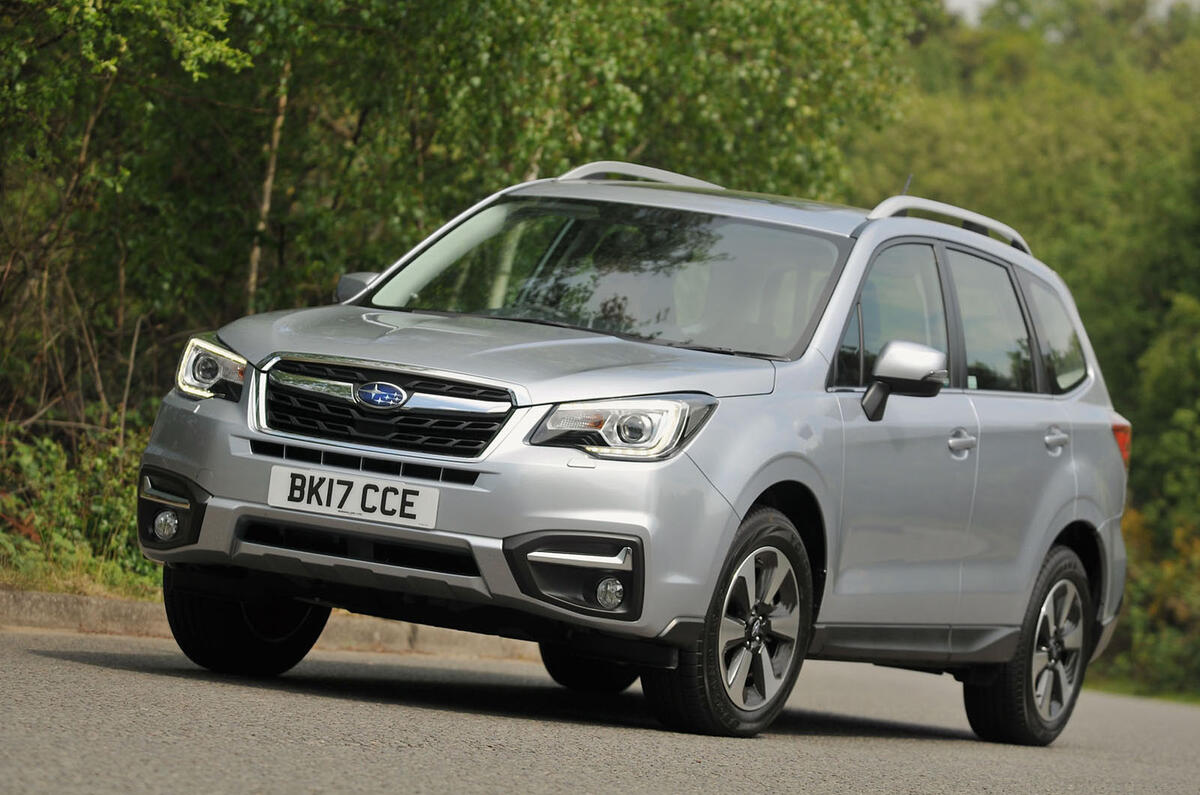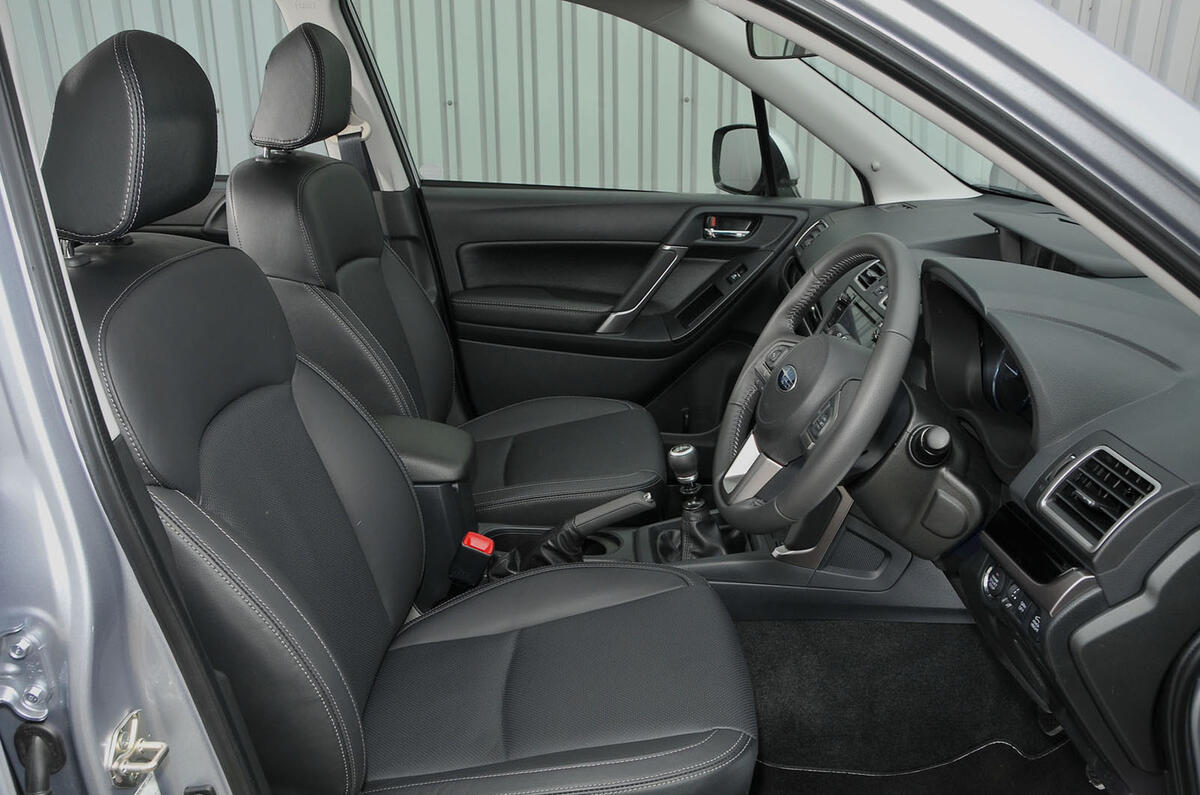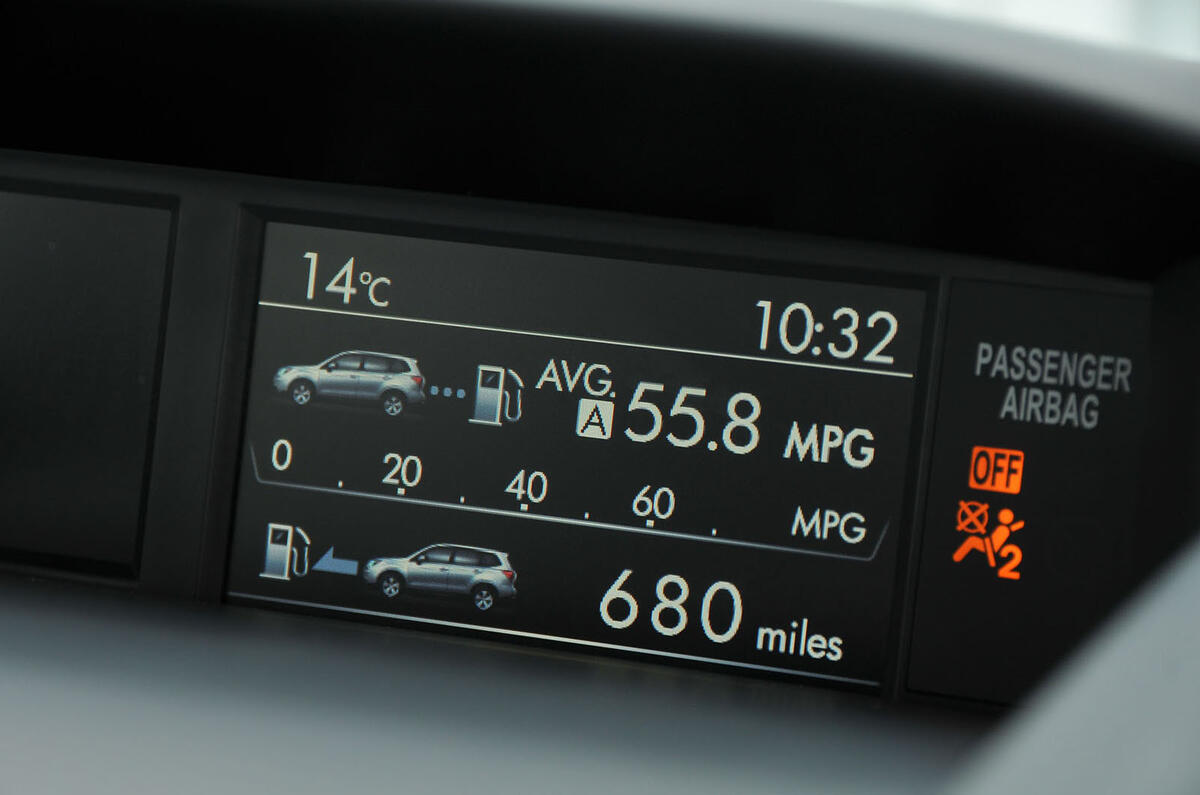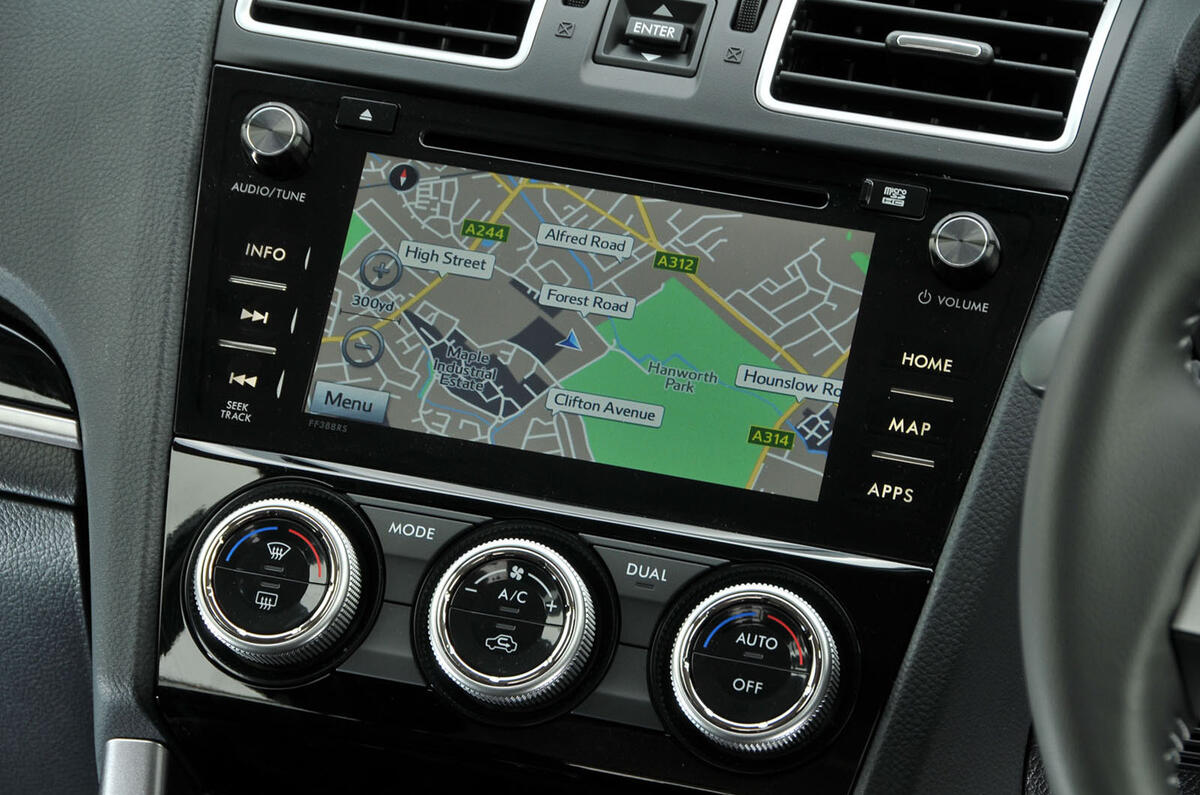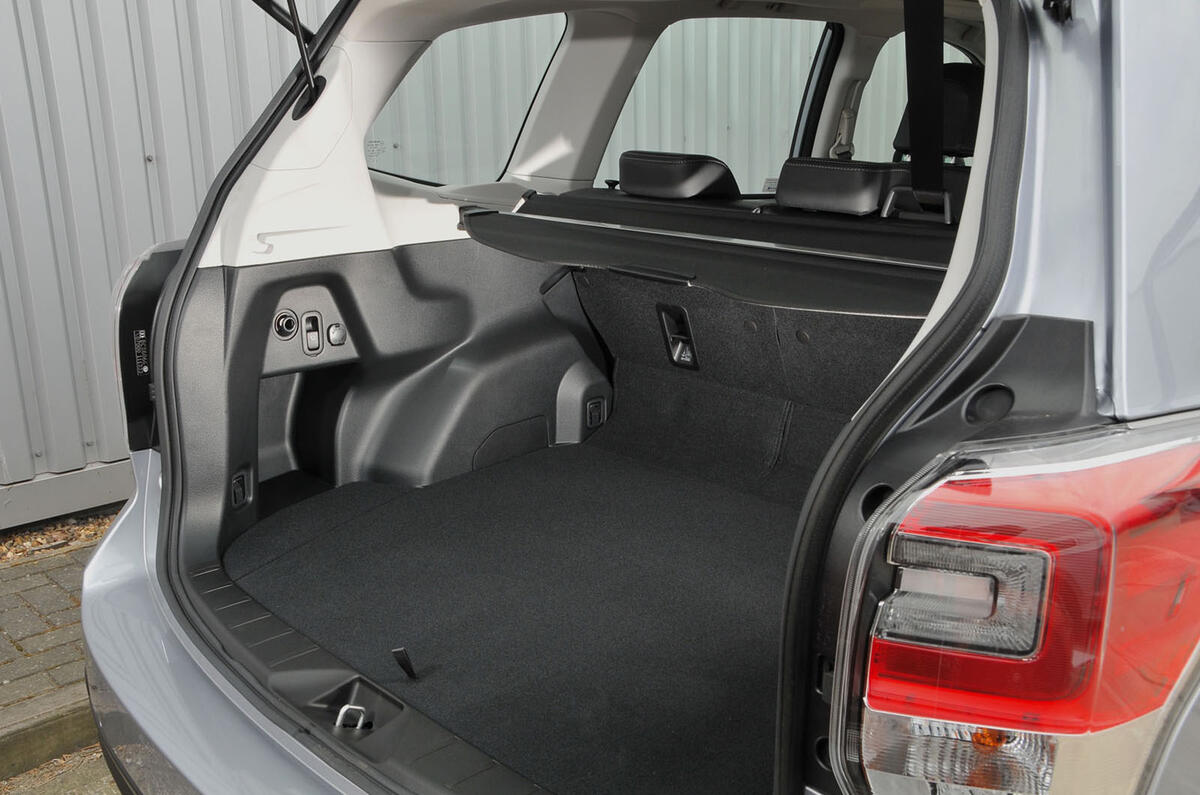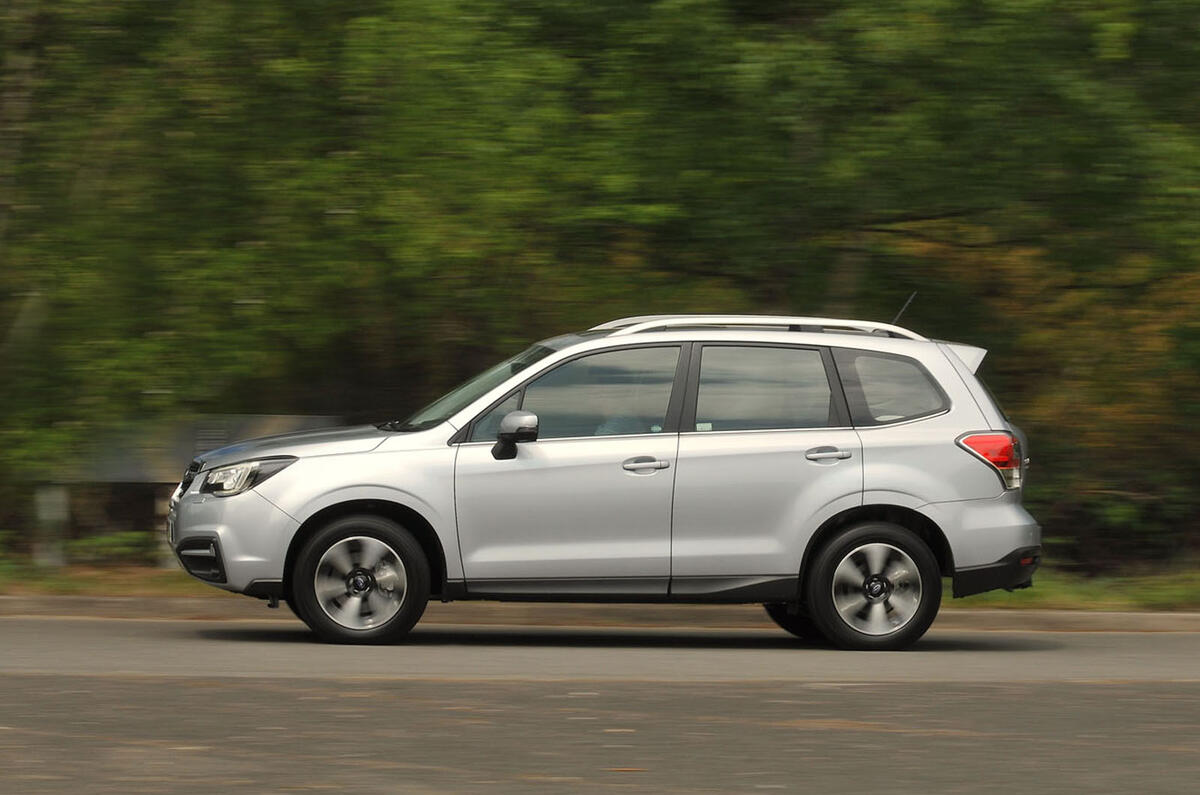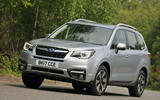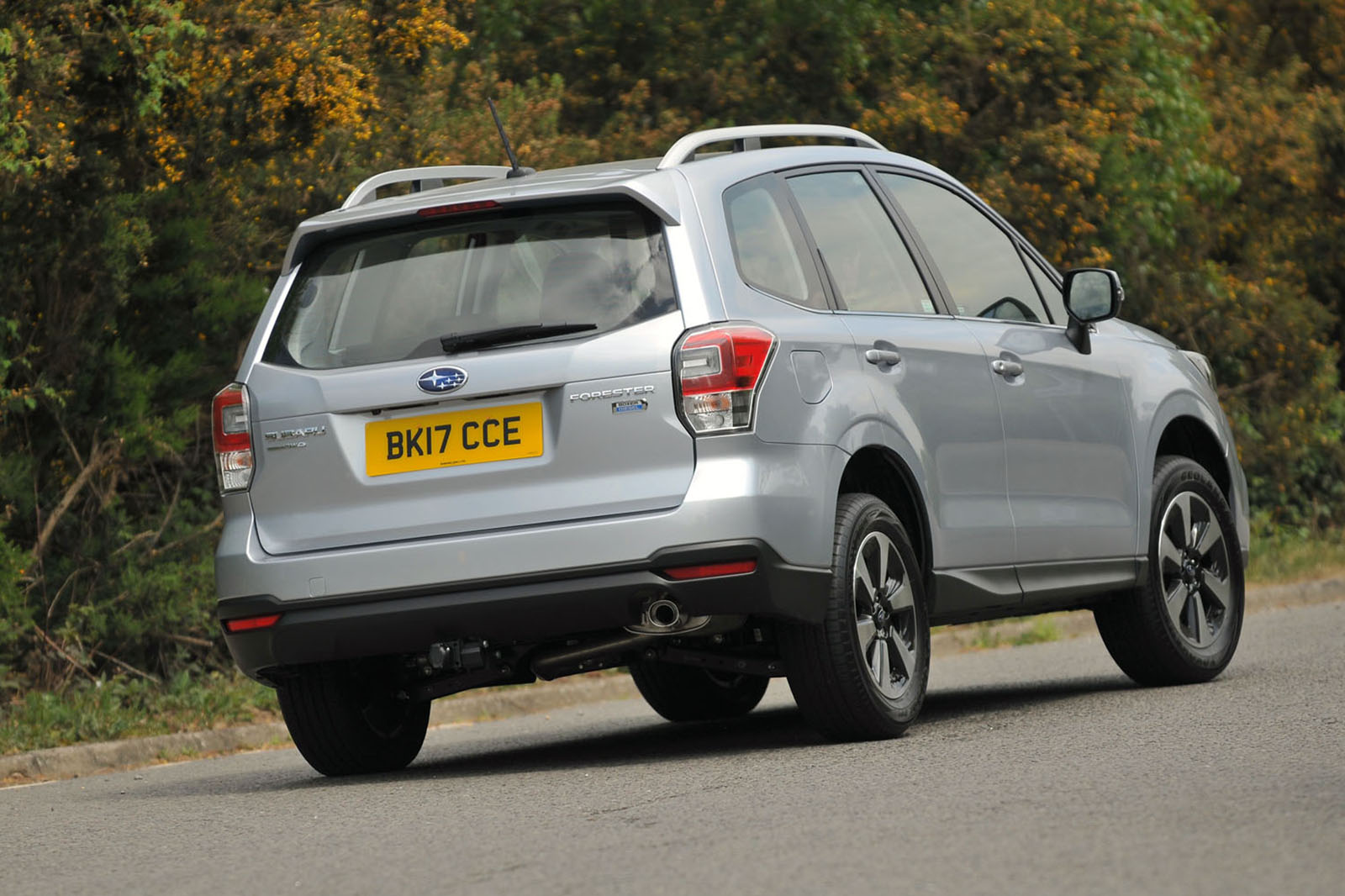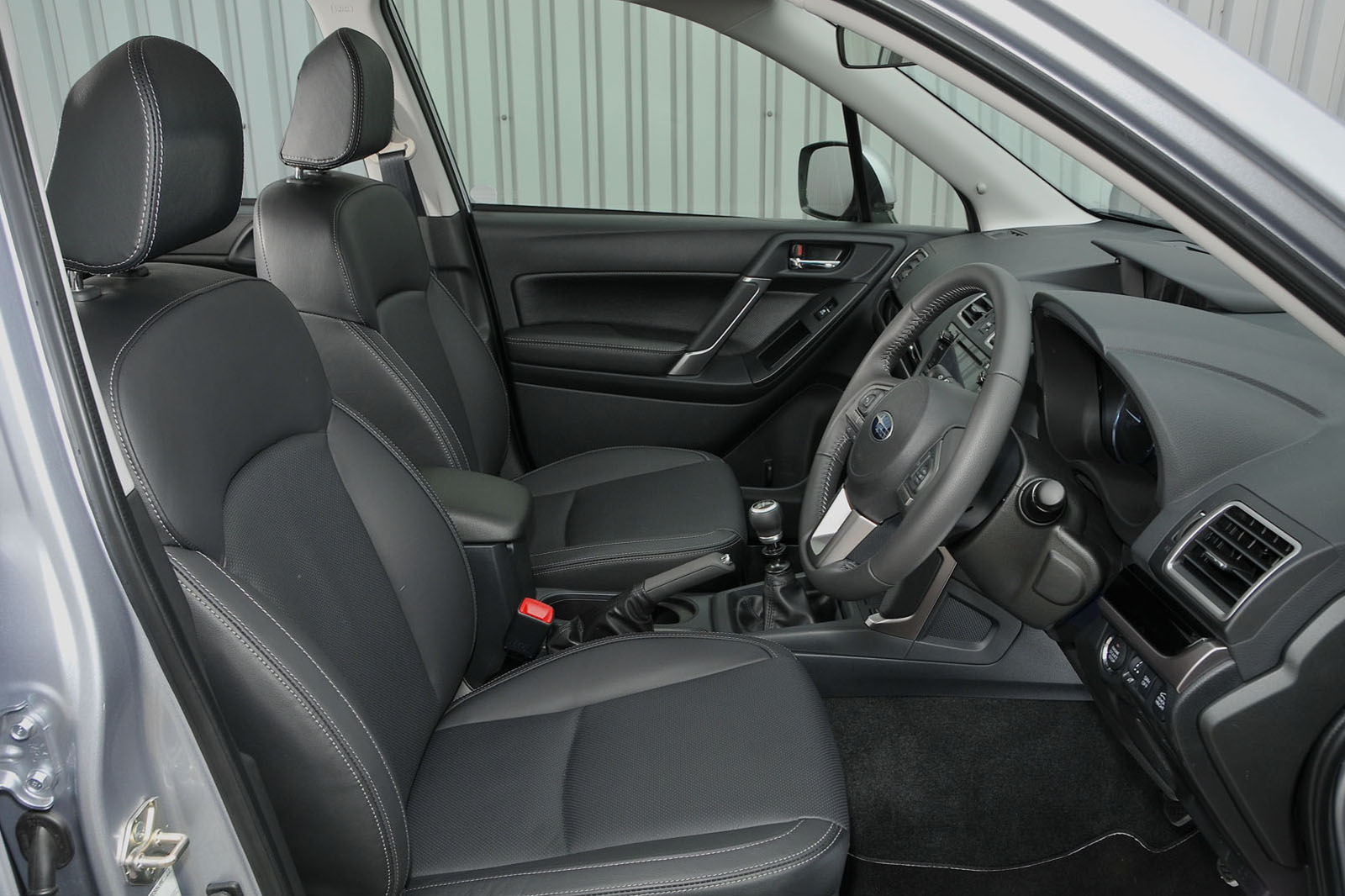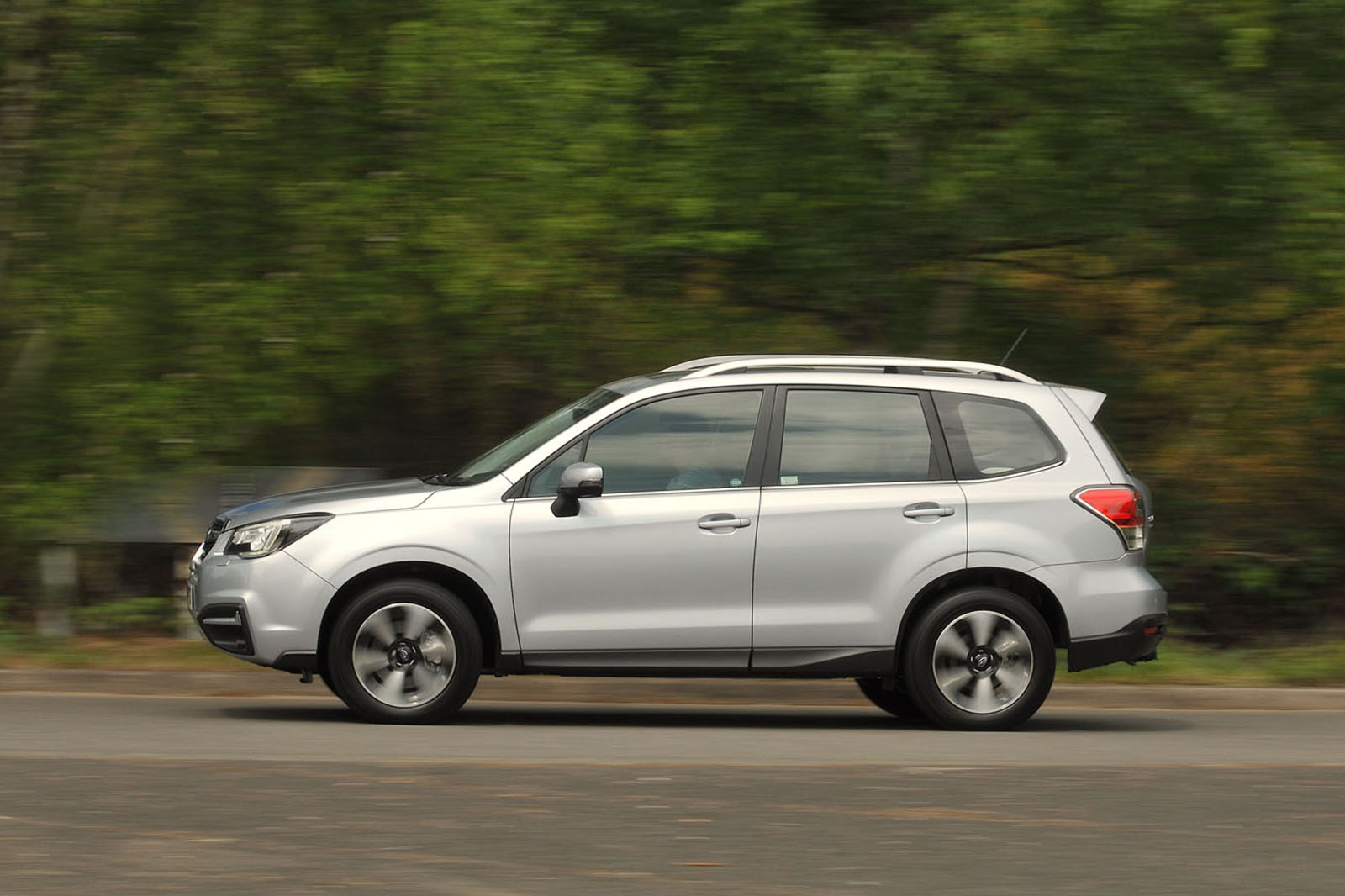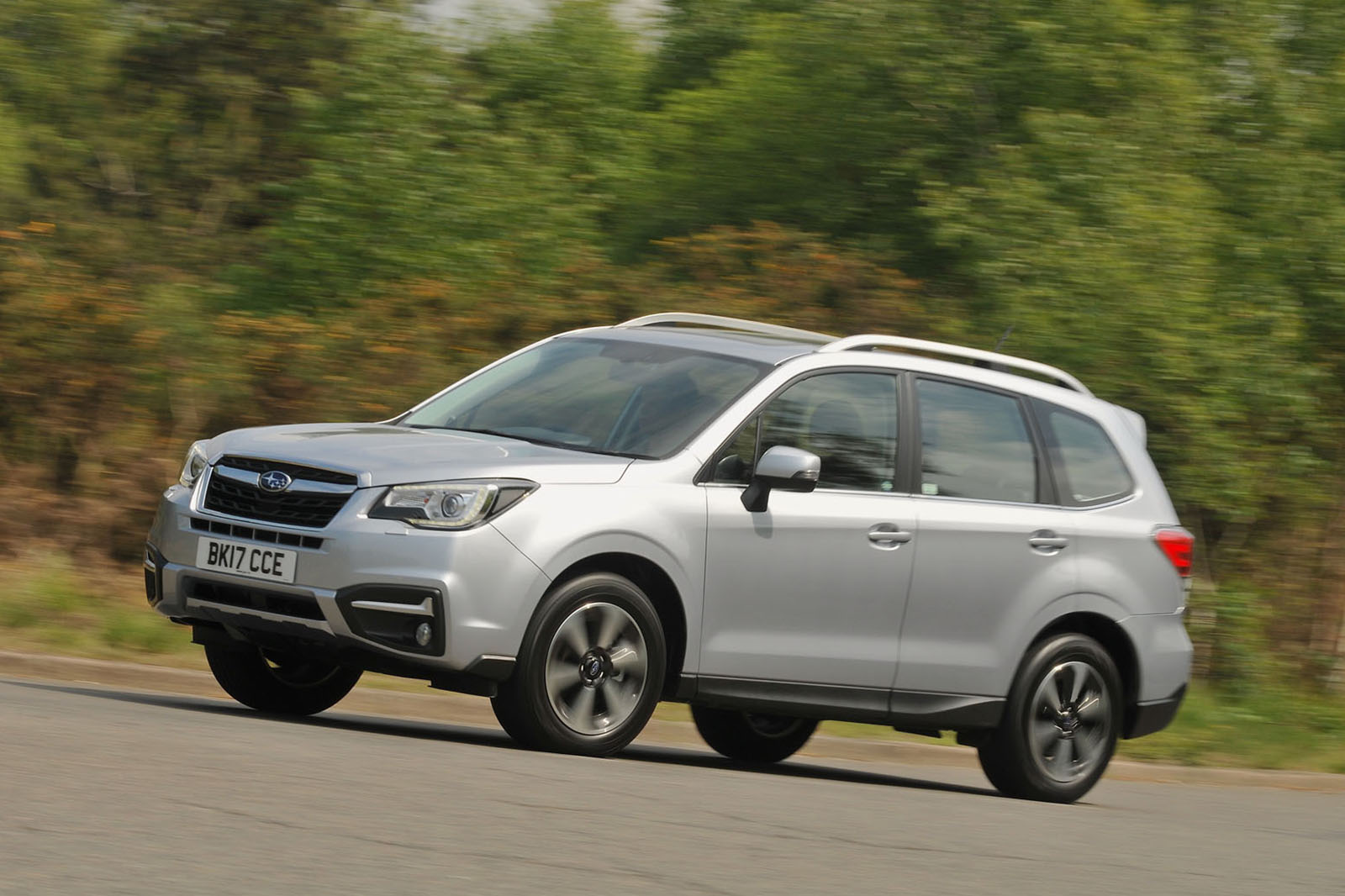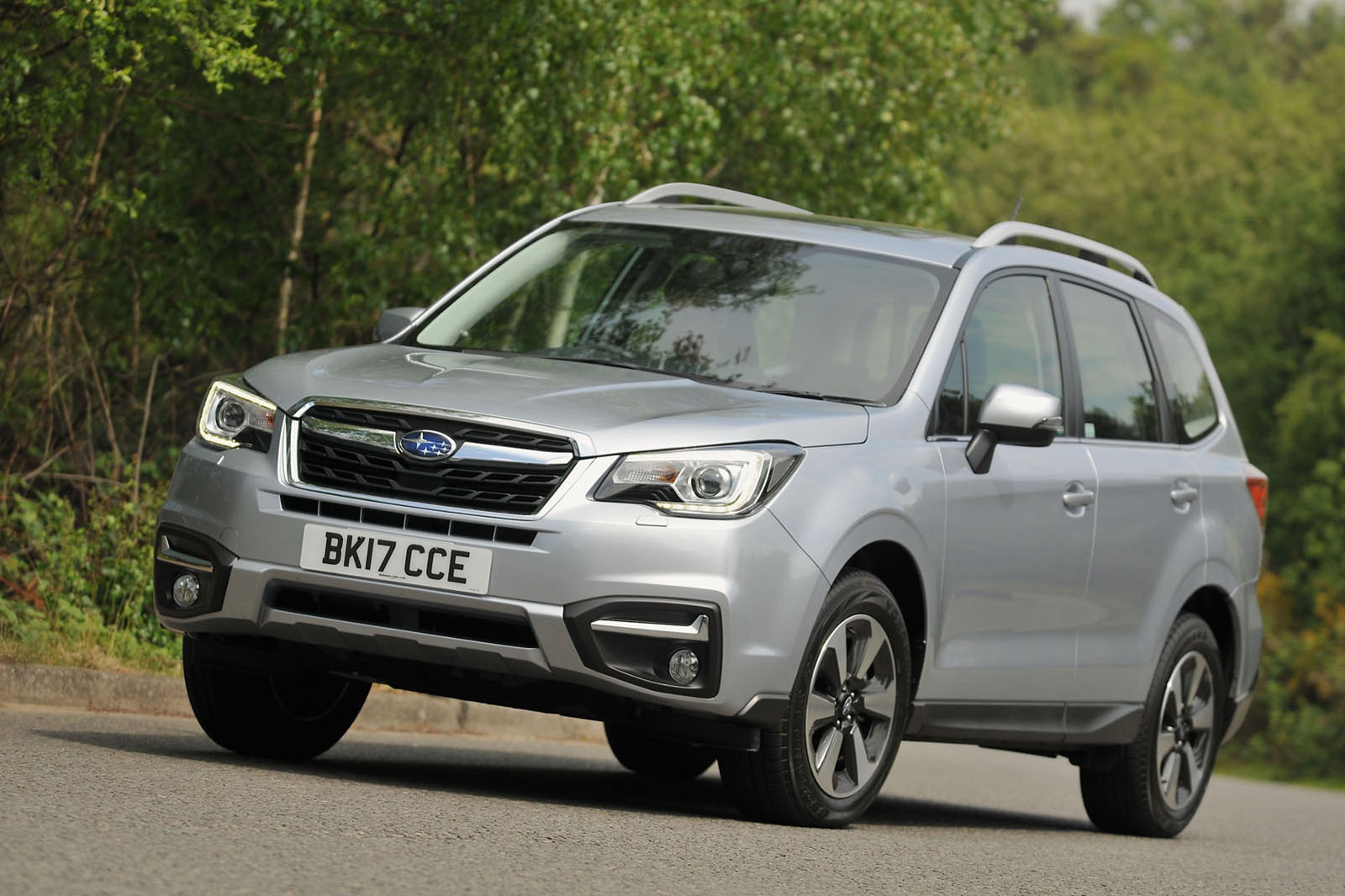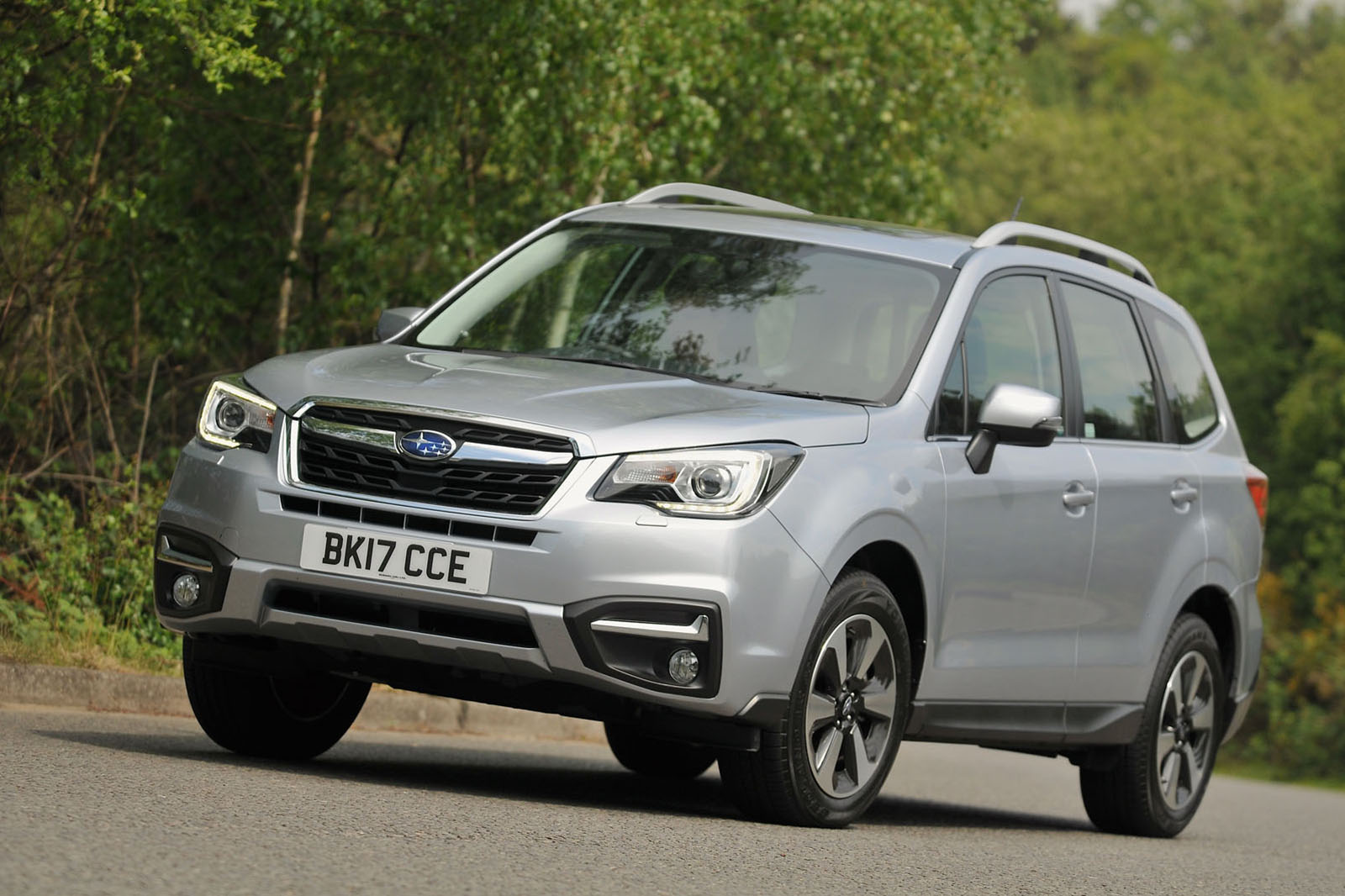Inside, from the driver’s seat, the Forester seems much as it is: an Subaru XV with added volume. Subaru’s dashboard design, limited either by a lack of imagination or investment, is transferred almost wholesale and is no more appealing when viewed from higher up, though a 2016 facelift did increase interior quality with more softer touch materials, as well as bringing a new grille and front bumper, thicker glass to improve soundproofing and a quicker steering rack.
An 80mm drop in the instrument panel compared to the pre-2013 Forester leaves you feeling dangled from a perch, commanding fine views of the surrounding countryside but as distant from the controls as a hot-air balloonist is from the treetops. There’s no denying the sense of space, though. With large windows and a vast, retractable sunroof, the Forester is airy and well lit.
It’s reasonable in the back, too. The longer wheelbase means an extra 23mm of rear legroom, which makes it sufficiently roomy for all but the loftiest. Access is mildly enhanced by slightly broader door openings and a 50mm lowering of the sills.
Subaru has even supplied more room for feet, remodelling the floor structure and reshaping the centre console so that even large boots can rest flush with the plastic mats. It’s just a shame it didn’t get around to doing this at the front, where there is precious little room to rest a booted foot away from the clutch pedal.
In the boot, a more uniform deck and broader bootlid mean better ease of use and a seats-up luggage capacity of 505 litres (up from 450). That’s enough for the family hound but some way short of the Forester’s bigger-boned rivals. The rear seats collapse at the tug of two boot-located levers to reveal 1592 litres of long load space.
Bluetooth connectivity comes as standard, but the more basic Foresters are severely limited by the rudimentary nature of their stereo interface. At least one road tester was defeated by the impenetrable process for connecting a phone; many will not even begin when there is no specific button dedicated to the task. On a fairly expensive car, this is simply not good enough.
Straightforward stereo functionality is fine when just listening to the radio, but that’s about it for the Forester. The entry-level model comes with four speakers. And there’s no DAB, anywhere in the range. Also not good enough.
On the trim level fronts, there are five to choose from three fitted with the petrol engine (XE, XE Premium and XT), while the XC and XC Premium come with Subaru’s oilburner under the bonnet.
The XE and XC trimmed Foresters come with a modest amount of standard equipment, with electrically heated and folding door mirrors, automatic lights, cruise control, electric windows and 17in alloy wheels fitted on the outside. Inside there is dual-zone climate control, electrically adjustable driver's seat, heated front seats, and Subaru's Starlink infotainment system complete with a 7.0in touchscreen display, Bluetooth and USB connectivity, DAB radio and a reversing camera.
Upgrading to the XE or XC Premium adds leather seats, keyless entry and start, and sat nav, while the range-topping XT models gain a twin-exhaust, alloy pedals, 18in wheels and privacy glass. To celebrate the 50th anniversary of the Boxer engine, there is a special edition Forester based on the XC Premium trimmed version with the addition of a green paint job, brown leather upholstery, better under car protection and a stainless steel cargo step panel.
As part of Subaru's tweaking of its SUV range, it added EyeSight safety technology to its cars, with the Forester last to benefit from it. Only available as standard on XE and XE Premium Lineartronic models, the system uses two camera located on the rear view mirror to use image recognition to aid numerous safety systems on the Forester, including autonomous emergency braking, adaptive cruise control, pre-collision braking and throttle management, lane departure and sway warnings.


